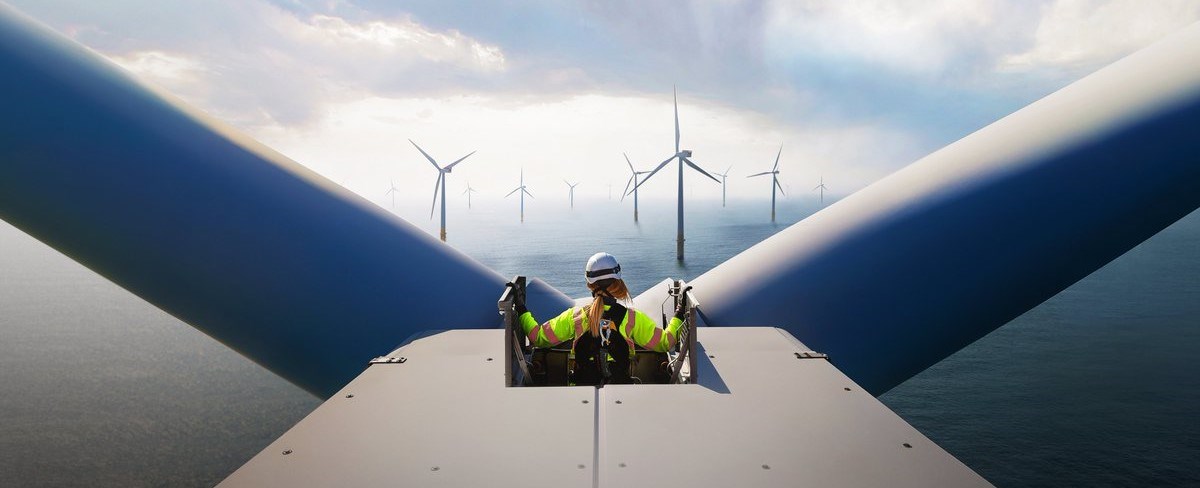Delivering more secure and sustainable homegrown energy

The UK is a world leader on offshore wind, it’s right then that Government should look to harness that incredible power with ambitious targets in order reduce our reliance on volatile gas markets and produce secure, homegrown energy supplies.
Westminster is aiming for 50GW of offshore wind by 2030 and has committed to decarbonising the power sector by 2035. Meanwhile the Scottish Government is targeting 11GW of offshore wind and a 75% emissions reduction by 2030.
A leading developer in offshore wind
Against this backdrop, SSE is the leading renewable energy developer, owner and operator in the UK and Ireland.
Our strategy is to lead the transition to a net zero future through the development, construction and operation of world-class renewable power assets.
We’re doubling our installed renewable energy capacity to 8GW by 2026 and have set ambitious targets to treble capacity to over 13GW by 2031, increasing output fivefold to over 50TWh annually – enough to be able to power an incredible 20 million homes each year.
Our projects are striking out as we lead the way in, pushing further and faster in developing the cleaner, cheaper and more secure energy system of tomorrow.
Including what will be the world’s largest offshore wind farm, Dogger Bank, off the coast of Yorkshire and Scotland’s largest and the world’s deepest tethered offshore wind farm, Seagreen off the coast of Angus.
On the Shetland Islands we’re building what will be one of Europe’s most productive onshore wind farms, Viking.
Whilst we’re developing one of the largest offshore opportunities in the world in the mega Berwick Bank Offshore Wind Farm in the Firth of Forth, with the potential to generate enough renewable energy to power over 5 million homes.
And in early 2022 it was confirmed SSE will continue to blaze a trail for new technology when we secured rights to develop a new giant floating offshore wind farm off the coast of Angus.
But when the wind doesn’t blow a mix of technologies will be needed to balance the electricity system.
The UK's biggest battery
Projects like Coire Glas pumped storage, which we are developing in the Scottish Highlands, would take excess energy on the grid and use it to pump water up a hill into the reservoir, where it could be stored before being released to power the grid when wind output is low and demand is high.
And this is a two-way street: when it does blow and demand is low, pumped storage and hydrogen technologies can better utilise excess wind – lowering emissions and keeping costs down for customers.
Coire Glas will be the first large-scale pumped storage scheme to be developed in the UK for more than 30 years and would more than double Great Britain’s existing electricity storage capacity.
Our renewables projects are driving supply chain opportunities and growth; supporting jobs and communities for decades to come, delivering more than just electricity.
Supporting Jobs and Opportunity across the UK
Our projects will support huge benefits for the economy – delivering jobs, supply chain opportunities and investment in communities up and down the country.
Take the creation of a new world-class wind turbine tower factory Nigg for example, or at Beatrice Offshore Wind Farm in the North of Scotland, where we’ve transformed the town of Wick, creating local jobs and upgrading the harbor side.
Renewables will also work to protect UK consumers. They’ll actually pay money back to consumers when wholesale prices are high.
Fundamentally the scaling up of renewables is about transitioning from a high-carbon energy sector to a low-carbon one – and that will inevitably have implications for people and communities that we must pre-empt and manage fairly.
At SSE we’ve been at the forefront helping people make the switch to low-carbon roles. A recent survey of our employees found one in five had previously worked in a high-carbon sector role.
This workforce brings skills that are highly relevant for renewables; they also keep jobs in the communities around our assets. Two-thirds of control room operatives at our Beatrice wind farm control room in Wick, for example, came from oil and gas jobs.
Renewables will end up generating most of the energy the UK needs; but it can unlock so much more.
To find out more about SSE's renewable energy plans and projects visit SSE Renewables.


